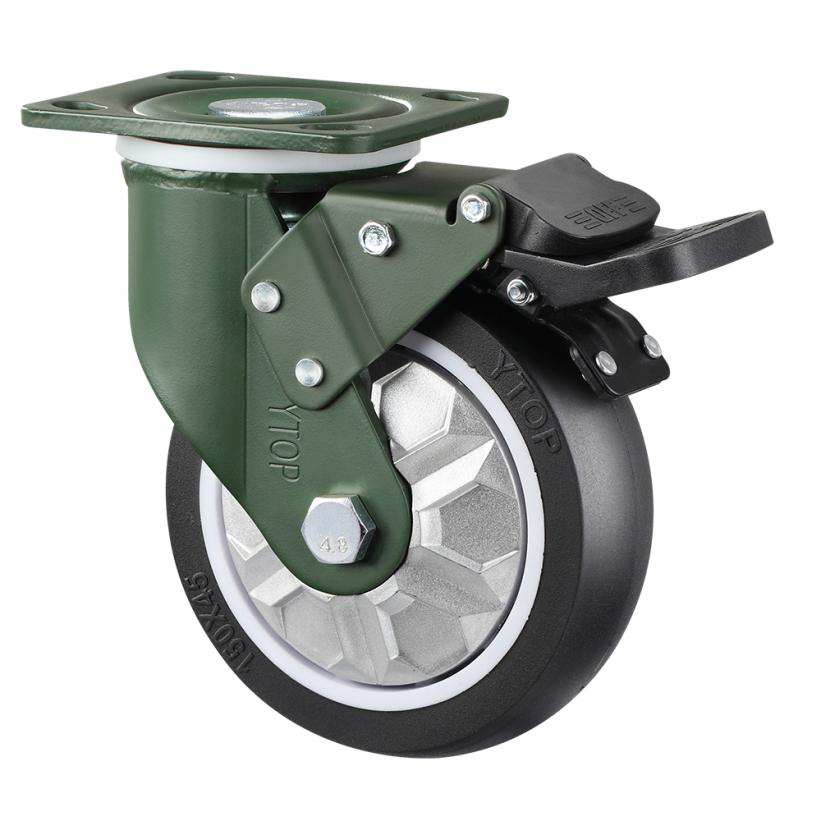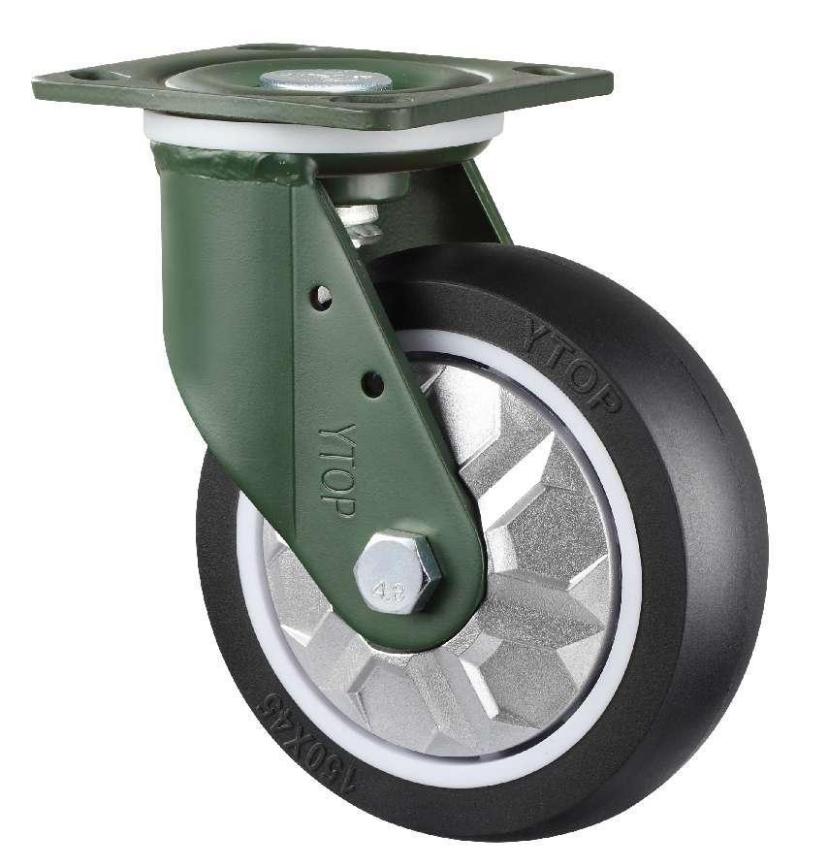The difference between the brake wheel and the universal wheel is that the brake wheel is the universal wheel with a device that can be stuck to the wheel, which allows the object to stay put when he does not need to roll. The universal wheel is the so-called movable caster, its structure allows horizontal 360 degree rotation. Caster is a general term that includes movable casters and fixed casters. Fixed casters do not have a rotating structure and cannot rotate horizontally but only vertically. These two types of casters are generally used with, for example, the structure of the trolley is the front two fixed wheels, the back near the push handrail is two movable universal wheel.

Brake Wheels:
The brake wheel is usually mounted at one or both ends of the cart at a specific location. Its primary function is to provide a braking function to prevent the trolley from sliding or moving. When the brake wheel is locked, the trolley will remain stationary when it stops, avoiding unwanted sliding or rolling. The brake wheel is critical in situations where the trolley needs to be parked or secured, especially on slopes or when it needs to be parked for long periods of time.
Universal Wheel:
The universal wheel is another type of wheel in the cart design, which has the characteristic of free rotation. The main purpose of the gimbal is to provide flexible maneuverability and steering ability. Usually the trolley is equipped with two universal wheels, which are located at the front or rear of the cart. The wheels are free to rotate, allowing the trolley to be more flexible when it needs to turn or change direction. This design allows the operator to easily steer, turn or adjust the direction, improving the ease and efficiency of handling the trolley.

Distinction:
There are distinct differences in the functions and features of brake wheels and gimbal wheels:
Function: Brake wheels provide a braking function to prevent the trolley from sliding or moving, while gimbal wheels provide maneuverability and steering capability, allowing the cart to change direction more flexibly when needed.proving the ease and efficiency of handling the trolley.
Distinction:
There are distinct differences in the functions and features of brake wheels and gimbal wheels:
Function: Brake wheels provide a braking function to prevent the trolley from sliding or moving, while gimbal wheels provide maneuverability and steering capability, allowing the cart to change direction more flexibly when needed.proving the ease and efficiency of handling the trolley.
Features: The brake wheel is usually fixed and cannot be freely rotated to keep the trolley stopped; while the universal wheel can be freely rotated, making the cart more flexible when turning or changing direction.
Function:
Brake wheels and gimbal wheels play different roles in trolley design:
The brake wheel is used to park and secure the trolley, preventing it from sliding or rolling, providing additional safety and stability.
Universal wheels provide maneuverability and steering capability, allowing the trolley to steer flexibly in tight spaces, improving the ease and efficiency of handling the trolley.
Conclusion:
Brake wheels and gimbal wheels play different roles in trolley design. The brake wheel provides the braking function for parking and securing the trolley, ensuring safety and stability. The cardan wheel provides maneuverability and steering capability, enabling the trolley to be steered and reoriented more flexibly when needed. Depending on the use requirements, the trolley will choose to use brake wheels, universal wheels or a combination of both, depending on the situation, to ensure that the function and performance of the cart is optimized.
Post time: Jul-03-2023
